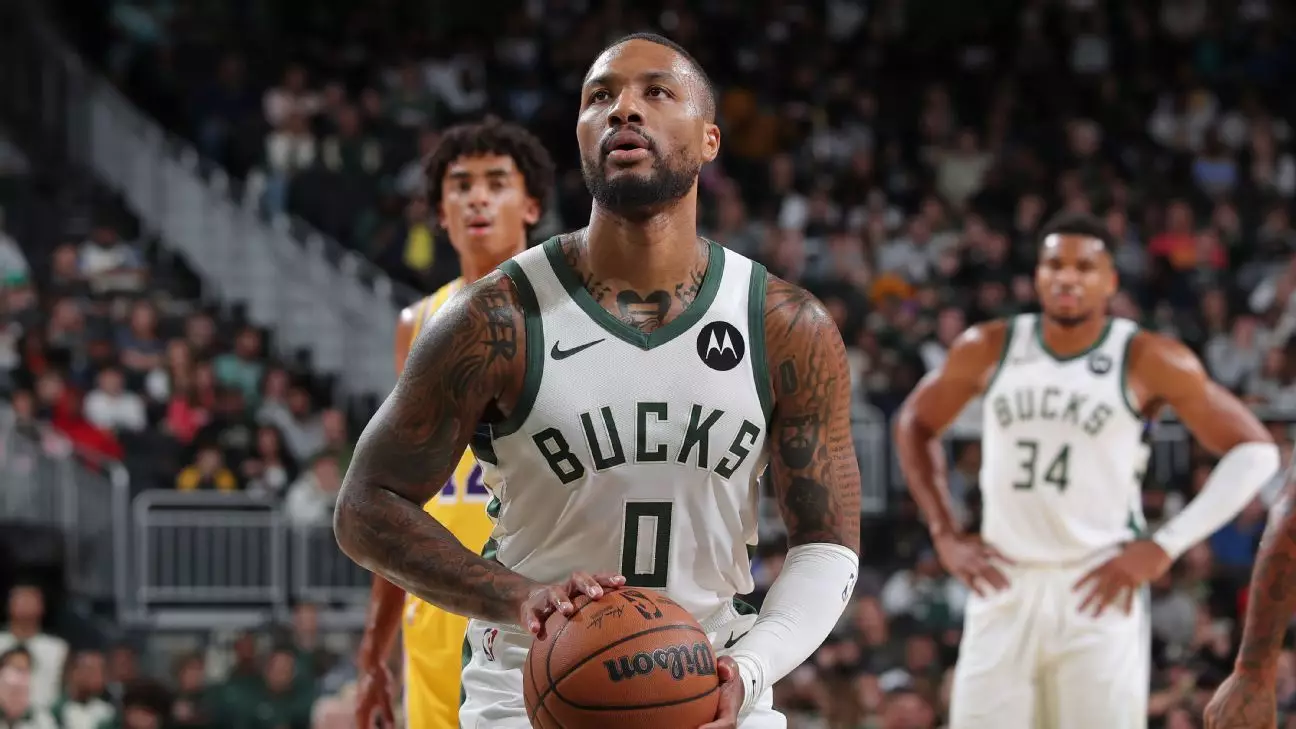The basketball world was shaken when news broke of Milwaukee Bucks star Damian Lillard being diagnosed with deep vein thrombosis in his right calf. This condition, commonly known as a blood clot, brings with it severe health implications and raises serious concerns about his competitive future. At 34 years old, Lillard finds himself in uncharted territory, not just professionally but personally as well. The diagnosis has left fans and analysts alike pondering not only the immediate impact on the Bucks’ season but also the long-term considerations for a player who has consistently been a powerhouse on the court.
A Team’s Response to a Health Crisis
The Milwaukee Bucks, recognizing the gravity of the situation, wasted no time in prioritizing Lillard’s health over their playoff aspirations. General manager Jon Horst has made it clear: player well-being takes precedence, stating, “Damian’s health is our No. 1 priority.” This approach serves as a vital reminder that sports are, at their core, about the athletes. It’s encouraging to hear that the team is aligned with Lillard’s recovery process through various medical assessments and treatment plans, aiming to ensure his safe return to the court.
In a transparent move noteworthy of professional organizations, the Bucks are meticulously monitoring Lillard as he navigates the complexities of his condition. His current regimen of blood thinners has stabilized the situation, but the fact that he has been under medical scrutiny for several days speaks volumes about the seriousness of deep vein thrombosis. With Lillard sidelined, the implications for the Bucks are far-reaching.
The Broader Impact on the Team
With Lillard out of the lineup, the Bucks’ performance has already begun to falter. Preserving playoff positioning is no small feat, especially when you consider they have recently dropped games at a troubling rate. With only 11 games left in the regular season, the urgency mounts. Lillard’s absence not only diminishes their offensive firepower, which has already been recorded at a striking disparity of nearly seven points per game, but it also puts pressure on the rest of the squad to step up—even more so in a highly competitive Eastern Conference.
Let’s not ignore the psychological ramifications. Teams often rally around injured stars, but the emotional toll of not having a player of Lillard’s caliber can be demoralizing. Last season, the Bucks faced a similar dilemma with star Giannis Antetokounmpo, showcasing that injuries during crucial points of the season can unravel the team’s carefully crafted dynamics.
The Road Ahead: A Challenging Yet Hopeful Outlook
As Lillard embarks on this medically-induced hiatus, it raises a critical question: will he return to the form we’ve come to expect? For many, Lillard represents the spirit of resilience in sports, and while he may be off the court for now, his abilities and sheer determination must not be underestimated. The prognosis from medical staff suggesting low chances of recurrence offers a glimmer of hope for both him and the organization.
Ultimately, the journey of recovery is fraught with challenges, yet it brings the promise of a triumphant return that can galvanize not just Lillard but the entire Milwaukee Bucks roster, reigniting their quest for championship glory.


Leave a Reply